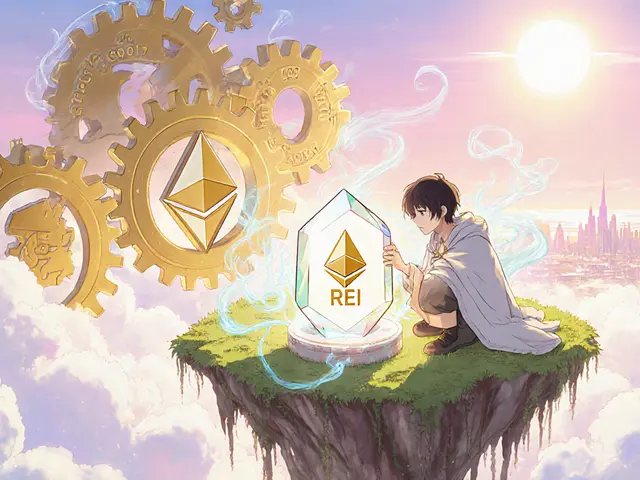Patent Filing in Crypto & Blockchain
When working with patent filing, the legal process of safeguarding an invention or technical concept. Also known as intellectual property registration, it grants exclusive rights that can be a game‑changer for blockchain startups. In this space, blockchain patents, patents covering distributed ledger methods, consensus algorithms, and smart‑contract architectures often intersect with crypto innovation, new token models, DeFi protocols, and layer‑2 scaling solutions. Understanding how these entities weave together helps you protect ideas while staying clear of regulatory traps.
Why does patent filing matter now? The crypto market has exploded, and investors are looking for defensible tech. A solid patent portfolio signals credibility, makes fundraising smoother, and can deter copycats. At the same time, regulators worldwide are tightening rules around digital assets. Countries like the United States and the European Union are drafting guidelines that tie intellectual‑property rights to compliance requirements. In other words, patent filing is no longer a back‑office task; it’s a strategic lever that aligns tech development with legal and market expectations.
Key Considerations for Patent Filing in the Crypto Space
First, define the scope of your invention clearly. Blockchain patents often revolve around three core attributes: consensus mechanisms, data structures, and interoperability layers. For example, a novel sharding protocol could qualify as a separate claim from a smart‑contract execution engine. Second, evaluate prior art meticulously. The open‑source nature of many blockchain projects means that similar code may already exist on GitHub, which can weaken a claim. Third, choose the right jurisdiction. While filing in the United States offers strong enforceability, the Patent Cooperation Treaty (PCT) lets you reserve rights in multiple countries before committing to regional filings.
Next, think about how your patent strategy meshes with tokenomics. Some projects issue utility tokens that grant holders a share of licensing revenue from patented technology. Others embed royalty‑free licenses directly into smart contracts, turning the patent into a community asset. This approach can boost user adoption and create network effects—an angle that many of the articles on our site explore, from exchange reviews to regulatory deep‑dives. When drafting claims, consider whether you want exclusive control or a more open model that fuels ecosystem growth.
Regulatory compliance adds another layer of complexity. Recent headlines about exchange penalties and KYC failures show that authorities are scrutinizing every aspect of crypto operations. A well‑crafted patent can serve as a compliance tool, proving that a protocol meets “reasonable security standards” set by financial regulators. Conversely, filing a vague or overly broad patent might attract challenges from competition authorities concerned about anti‑competitive behavior. Balancing protection with openness is key, especially in fast‑moving sectors like DeFi and NFT marketplaces.
Funding considerations also intersect with patent filing. Venture capitalists often request proof of intellectual‑property ownership before committing capital. A clear patent roadmap can boost valuation and give you leverage in negotiations with exchange platforms that might list your token. On the flip side, early public disclosure—common in open‑source blockchain projects—can jeopardize patent rights if not managed properly. Timing your publication, whitepaper release, and filing date requires careful planning.
From a practical standpoint, leverage professional services that specialize in crypto‑related patents. Traditional IP firms may lack the technical depth to understand concepts like zero‑knowledge proofs or cross‑shard communication. Look for firms that have filed blockchain patents before; they’ll know how to frame claims that survive examiner rejections. Many of the guides on our site, such as the cross‑shard communication article, highlight technical nuances that are directly relevant to patent drafting.
Finally, monitor the evolving patent landscape. New filings from major players—exchange giants, layer‑2 developers, and even hardware manufacturers—can signal emerging standards or potential infringement zones. Tools like Google Patents and the World Intellectual Property Organization’s database let you set alerts for keywords like “sharding,” “hydra consensus,” or “NFT royalty.” Staying informed helps you adjust your strategy before costly legal battles arise.
Below you’ll find a curated collection of articles that dive deeper into the topics we just covered. From exchange security reviews to regulatory updates and technical explainers, each piece adds a piece to the puzzle of how patent filing fits into the broader crypto ecosystem. Explore the posts to see real‑world examples, actionable tips, and the latest trends shaping intellectual‑property decisions in blockchain today.
1
How Blockchain Transforms Patent Management in 2025
Explore how blockchain reshapes patent filing, licensing, and enforcement, with benefits, challenges, and a step‑by‑step implementation guide.
Latest Posts
Popular Posts
-
 What is Privix New (PRIVIX) Crypto Coin? Facts, Price, and Risks in 2025
What is Privix New (PRIVIX) Crypto Coin? Facts, Price, and Risks in 2025
-
 Xena Exchange Crypto Exchange Review: Professional Tools vs. Regulatory Risks
Xena Exchange Crypto Exchange Review: Professional Tools vs. Regulatory Risks
-
 What is Bitgert (BRISE) crypto coin? Full breakdown of the blockchain, tokenomics, and real-world performance
What is Bitgert (BRISE) crypto coin? Full breakdown of the blockchain, tokenomics, and real-world performance
-
 What is LUXO (LUXO) crypto coin? The truth about the luxury authentication token
What is LUXO (LUXO) crypto coin? The truth about the luxury authentication token
-
 What Is Collateralization in DeFi? A Clear Guide to How It Works and Why It Matters
What Is Collateralization in DeFi? A Clear Guide to How It Works and Why It Matters
Tags
- crypto exchange
- cryptocurrency
- crypto exchange review
- meme cryptocurrency
- blockchain
- cryptocurrency compliance
- Binance Smart Chain
- CoinMarketCap airdrop
- underground crypto Nepal
- crypto airdrop guide
- crypto staking
- Bitcoin mining Iran
- airdrop
- Ethereum staking
- GENIUS Act
- liquid staking
- cryptocurrency exchange security
- crypto
- crypto airdrop
- crypto regulations



